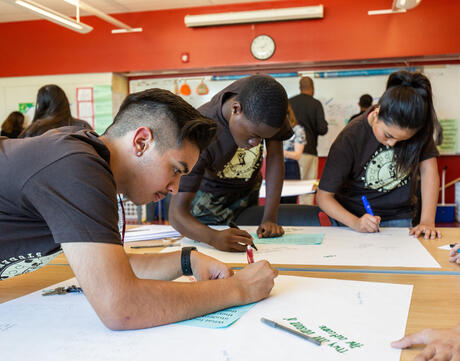
Civic Self-Portrait
At a Glance
Language
English — USSubject
- Civics & Citizenship
Grade
6–12- Culture & Identity
Overview
How do we help young people develop a sense of civic agency—the capacity to act purposefully and collaboratively to make a difference? This Civic Self-Portrait activity and the accompanying handout help students explore what it means to “choose to participate” and to visualize the different elements of being a civic agent.
Lesson Plans
Procedure
Unlimited Access to Learning. More Added Every Month.
Facing History & Ourselves is designed for educators who want to help students explore identity, think critically, grow emotionally, act ethically, and participate in civic life. It’s hard work, so we’ve developed some go-to professional learning opportunities to help you along the way.
Exploring ELA Text Selection with Julia Torres
On-Demand

Working for Justice, Equity and Civic Agency in Our Schools: A Conversation with Clint Smith
On-Demand

Centering Student Voices to Build Community and Agency
On-Demand














